Uttar Pradesh
About Uttar Pradesh
Home to one of the Seven Wonders of the World and flaunting exquisite arts like the handicrafts and jewellery Uttar Pradesh is a bountiful state and an utterly religious one. It is the home to some of the most beautiful monuments and cultural sights in India. The home to diverse religious people, this state boasts of the various cultural and religious fests. With massive royal influence in the fields of dance and music and arts, this state is home to one of the first classical dances of India, Kathak.
The state is also known for its Nawabi style in food, can advertise fantastic street food like the samosa and kachori as well as the royal meaty feasts and kebabs. The land of Ram, Lord Krishna, the Buddha and the Taj Mahal- Uttar Pradesh, rich in diversity, transcends all boundaries of art and culture and brings together a lively mix of people from all around the nation.
Fatehpur Sikri
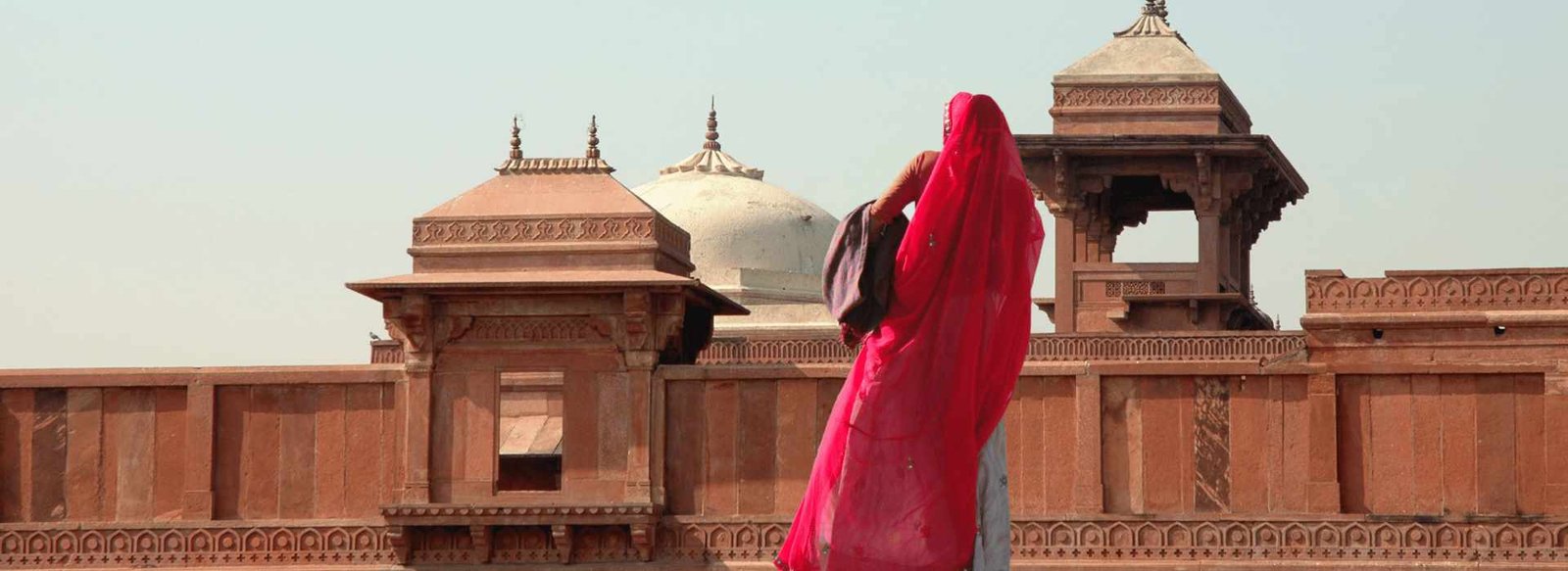
Located at a distance of 40km from Agra, Fatehpur Sikri is a town in Agra district and a famous tourist attraction. A city predominantly made of red sandstone, Fatehpur Sikri was founded in 1571 century by Mughal Emperor Akbar. It is essentially a fortified city built by the king and had been the capital of his Empire for fifteen years. Now a UNESCO world heritage site, it is home to Jodha Bai’s Palace, Jama Mosque, Buland Darwaza, and Tomb of Salim Chisti among many other famous monuments
A unique blend of architectural excellence, as well as religious beliefs – sums up Fatehpur Sikri. It was built by Akbar to honour Sheikh Salim Chisti, whose prediction of the birth of a Mughal heir came true while Akbar was visiting the then city of Sikri. In honour of the prophecy, Akbar built this city and Jama Masjid, a stunning mosque which is still in use today. He also undertook the construction of three palaces for each of his favourite wives, one a Hindu, one a Muslim and one a Christian. An Indo-Islamic Masterpiece, Fatehpur Sikri look its resplendent best during sunset.
Agra

Located at a distance of 40km from Agra, Fatehpur Sikri is a town in Agra district and a famous tourist attraction. A city predominantly made of red sandstone, Fatehpur Sikri was founded in 1571 century by Mughal Emperor Akbar. It is essentially a fortified city built by the king and had been the capital of his Empire for fifteen years. Now a UNESCO world heritage site, it is home to Jodha Bai’s Palace, Jama Mosque, Buland Darwaza, and Tomb of Salim Chisti among many other famous monuments.
Apart from its monuments, Agra has some exciting stuff for foodies. It is as famous for its Petha (a sweet made from pumpkin and flavoured with rose water and saffron) as it is for the Taj Mahal. Agra is also well known for its marble artefacts which are best bought in the Sadar Bazaar or Kinaari Bazaar area.
Things to Do
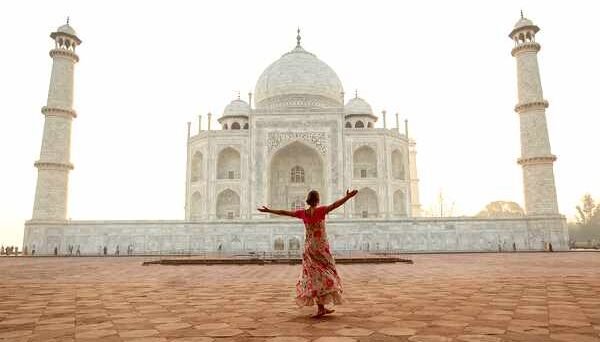
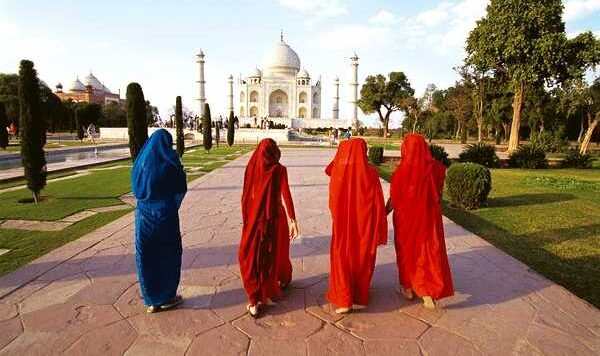
Taj Mahal
A UNESCO World Heritage Site, the Taj Mahal stands for the Crown of Palaces in the Persian language. The tomb is laid out in a rectangular shape and can be approached through a massive gateway which has an arch and alcoves on either side of it. There are water channels and fountains in the entrance which makes the monument even more spectacular.
Covering an area of approximately 42 Acres, the construction of the Taj Mahal began in 1631 and took 17 years before it was completed in 1648! It was constructed using white marble obtained from Makrana in Rajasthan. One of the seven wonders of the world, Taj Mahal is located on the banks of River Yamuna in Agra. It was built by the Mughal Emperor Shah Jahan as a memorial for his third wife, Mumtaz Mahal. It also houses the tomb of Shah Jahan himself. Constructed entirely out of white marble in the 17th century, Taj Mahal is one of the most beautiful monuments in the world. Every year visitors numbering more than the entire population of Agra pass through the magnificent gates to catch a glimpse of this breathtaking monument.
Agra Fort
An architectural masterpiece, The Red Fort of Agra or Agra Fort was built by Emperor Akbar in 1573. It is located on the right bank of the River Yamuna and is made entirely of red sandstone. The historical fort was once the ersthwhile residence of the Mughals until 1638. One of the UNESCO World Heritage Sites, it lies 2.5 kilometres from Taj Mahal.
Also known as Lal –Qila, Fort Rouge or Qila-i-Akbari, Agra Fort is a symbol of Agra and is so massive that it is often referred to as a walled city. It is the perfect example of Mughal art and architecture, built purely out of red sandstone. Within the premises of Agra Fort lie the most exquisite structures like the Pearl Mosque, Diwan-i I Khas, Diwan-i I Aam, Moti Masjid and Jahangiri Mahal. Some part of the Agra Fort is used by the Indian Army is off-limit to public access. View of Yamuna River and Taj Mahal from the fort’s pavilions is mind-stirring.
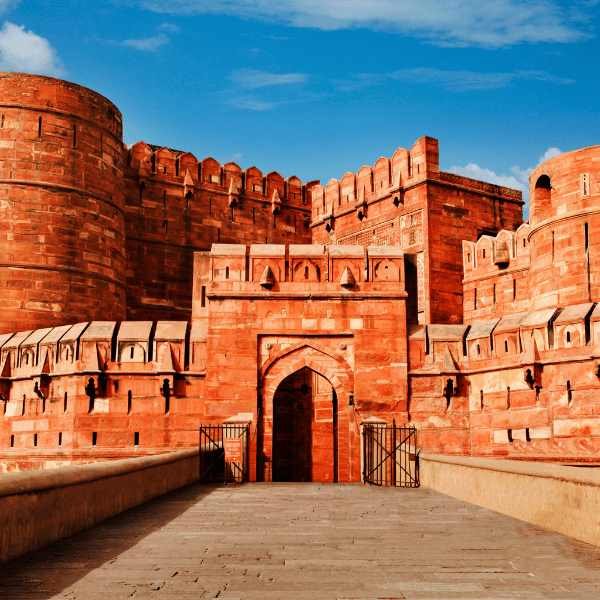
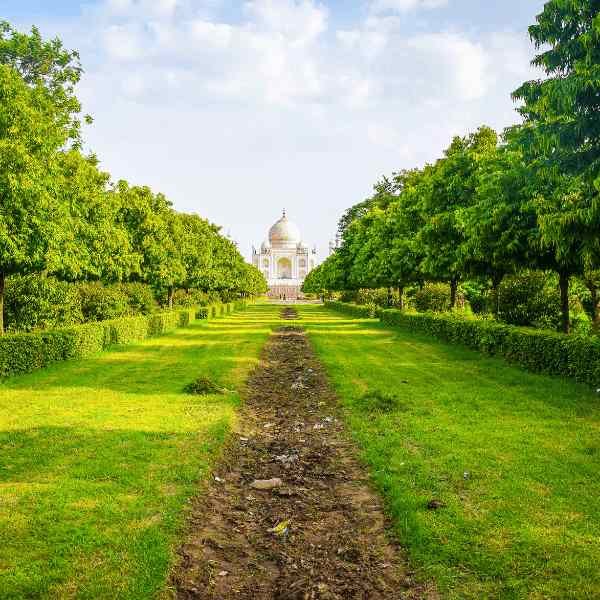
Mehtab Bagh
Mehtab Bagh is a charbagh garden complex and one of the last Mughal gardens in Agra. It is located just north to the Taj Mahal and overlooks the Agra Fort and Yamuna river on the opposite side. Perfectly aligned with the gardens of Taj Mahal, Mehtab Bagh provides a picture-perfect view of the Taj from the fountain at the front of the entrance gate. It is a popular sunset spot among the photography fanatics and nature enthusiasts.
The splendid Mehtab Bagh has four sandstone towers, one each at the corner with a huge octagonal tank right in the centre. It is believed that Shah Jahan especially got the bagh designed for his personal interests so he could come up here and admire the infinite beauty of Taj Mahal. On the moonlit nights, the clear reflection of the wondrous Taj Mahal in the waters of the park is a sight beyond description. Mehtabh Bagh is now a horticulture delight with scores of vibrantly blooming floral plants and medicinal herbs, besides the umpteen fruit trees, which add to the beauty of the park.
Itmad-ud-Daulah
Often referred to as the “Baby Taj Mahal”, the tomb of Itimad-ud-daulah is a Mughal mausoleum and often regarded as a copy of the Taj Mahal. This is the first tomb in India made entirely of marble. The tomb was commissioned by Nur Jahan, the wife of Jahangir, for her father Mir Gheyas Beg (later known as Itimad-ud-daulah), who was a minister in the court of Shah Jahan.
The tomb of Itimad-ud-daulah marks the transition from the first phase of the Mughal architecture to the second. This was the first structure to make use of pietra dura and the first to be built on the banks of the Yamuna River. It basically consists of Indo-Islamic architecture, with the use of arched entrances and octagonal shaped towers. If you take a bird’s eye of Itimad-ud-daulah Tomb, it looks like a jewel box set in a garden. This magnificent mausoleum, built on the banks of Yamuna, was to inspire the construction of one of the wonders of the world “Taj Mahal” in the later years.
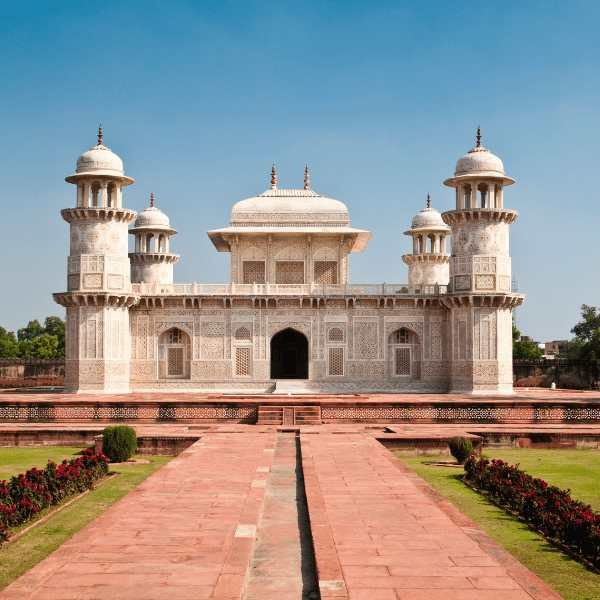
Jhansi
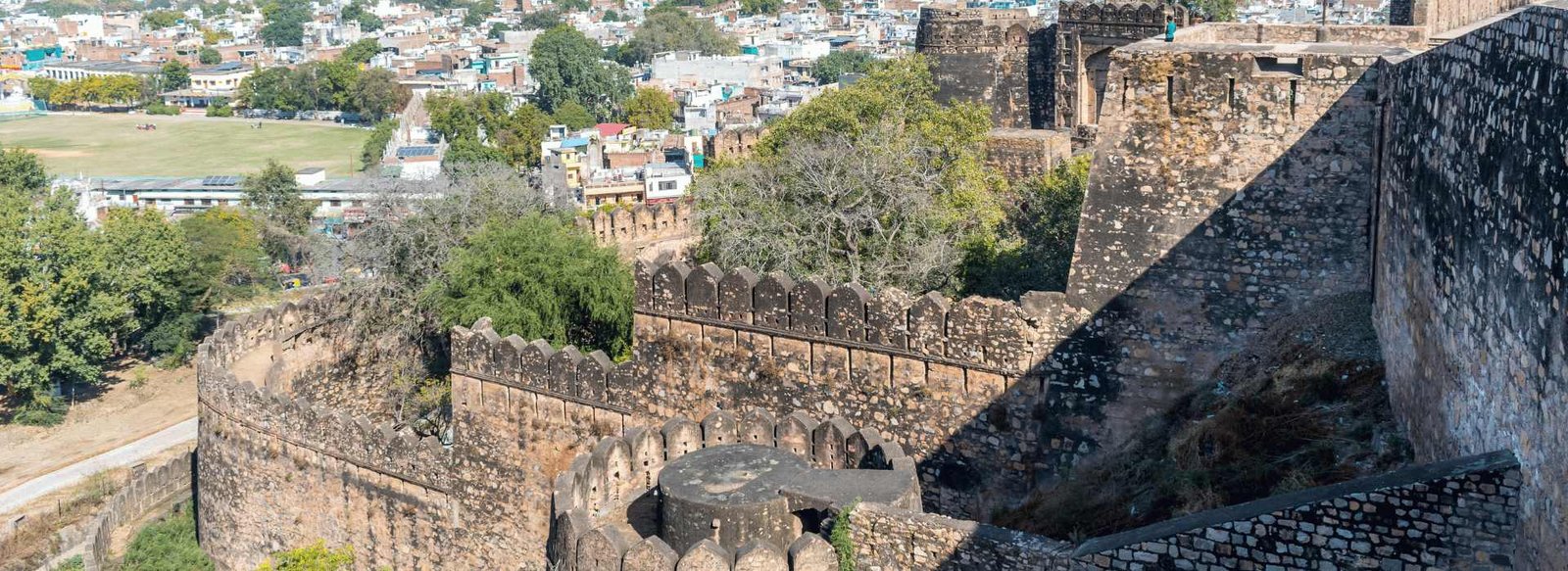
The city of Jhansi in Uttar Pradesh is a definite addition to every history buff or traveller who sets foot in this state. Sitting at the very south in the Bundelkhand region and built on the banks of the Betwa and Pahunch rivers, Jhansi is popular as the place where Rani Laxmi Bai, who is also referred to as “Jhansi Ki Rani”, lived and reigned.
Jhansi gets its name from the Jhansi Fort built by Raja Bir Singh Deo who named it so as the rulers could only see a shadow atop a distant hill when gazing at the fort. These facts and the variety of monuments and essential landmarks down to the streets of the city show that Jhansi has a string of historical evidence.
Gwalior is the nearest biggest city to Jhansi, which lies in Madhya Pradesh and at a distance of 99 Km. The National Highway Development Project has given way to the Development of Jhansi, resulting in a real estate boom in the modern day. Currently, it is the 3rd cleanest city in Uttar Pradesh.
Jhansi Fort
The Jhansi Fort is located at the top of Bagira, a hill situated in Uttar Pradesh in the northern part of India. It is a 17th-century architectural monument that has undergone royal construction followed by massive destruction in the first War of Independence against the British East India Company. Within the four-walls lay monuments like Baradari with astute and creative architecture, Kal Kothari or a dungeon for prisoners, Ganesha and Shiva temples and a museum that harbours remnants of the Chandela dynasty – weaponry, clothes and paintings. The streets are filled with bazaars and temples. There is also a war memorial paying tribute to martyrs, and the Rani Lakshmibai Park built in the memory of her poignant role in the freedom struggle.

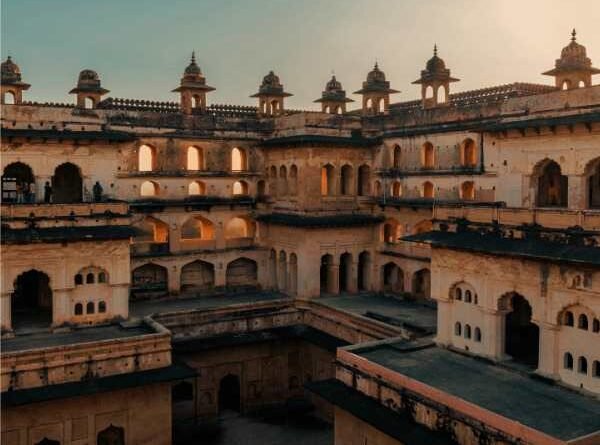
Orchha Fort
The small town of Orchha situated 16 km from Jhansi in Madhya Pradesh emanates an architecturally historicized complex called the Orchha Fort Complex. It was built in 1501 AD by Raja Rudra Pratap Singh of the Bundela dynasty. It is a manifestation of Rajput and Mughal architecture flamboyantly decorated with latticed windows, projected platforms and balconies and mirrors on ceilings. Built by the descendants of the Bundela Dynasty, the Orchha Fort complex houses several monuments such as the Raja Mahal, Sheesh Mahal, Rai Praveen Mahal and also gardens such as the Phool Bagh.
Lucknow
The capital and the largest city of Uttar Pradesh, Lucknow, situated on the banks of river Gomti, welcomes you with a heartwarming note of “Muskuraiyein, kyunki aap Lucknow mein hai“. A city of kebabs and nawabs, of architecture and history, of literature and culture – that is Lucknow in a nutshell for you. From a slice of rich colonial history to modernized museums, this artistic hub of Awadh region beautifully brings together the opulence of a glittering past and the simplicity of a modern city.
Hazratganj, a major shopping area located in the heart of Lucknow, is famous for its ‘chaat’ and ‘kulfi’ eateries, posh Mughlai restaurants, and various shopping complexes. All the buildings in Hazratganj have a distinct Victorian architecture, and you can shop for literally anything – starting from inexpensive accessories and trinkets to high-end clothes, shoes and jewellery.
The people of Lucknow are known for their courtly manners and endearing ‘pehle aap‘ (you first) culture, which always leaves behind a smile on the faces of its visitors.

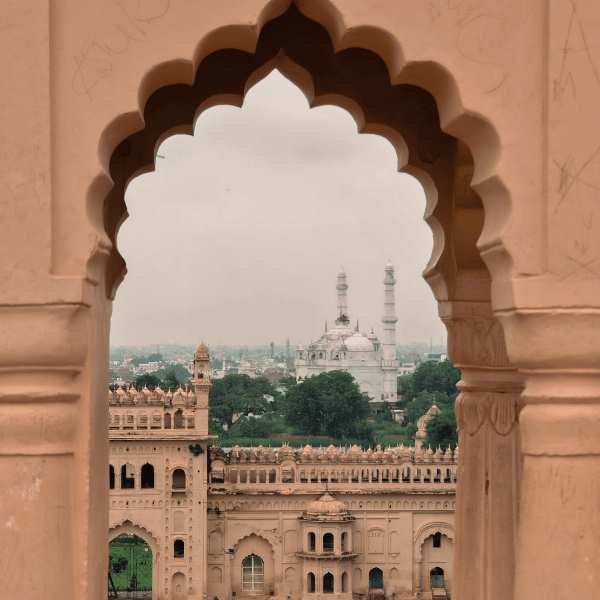
Bara Imambara
The Bara Imambara of Lucknow is one of the most famous monuments in the city. The Imambara is primarily known for its incredible maze, known as Bhul Bhulaiya locally, which is located on the upper floor of the monument. It is said that there are 1024 ways to get inside the maze but only 2 to come out.
Also known as Asfi Imambara, after the name of the Nawab of Lucknow who got it constructed, it is an important place of worship for the Muslims who come here every year to celebrate the religious festival of Muharram. Said to be the world’s largest structure that is unsupported by beams, Bara Imambara is considered a marvel of engineering and a fine specimen of Mughal architecture.
The Imambara has a unique style of construction. Moreover, no wood or metal has been used in the construction of this mosque. One can also have a view of the grave of Nawab Asaf-Ud-Dowlah and his crown, which is kept in the central hall, which is said to be the largest vaulted chamber in the world.
Chota Imambara
The Chhota Imambara, or the Imambara of Hussainabad, is one of the most beautiful and attractive buildings in the old city of Lucknow in Uttar Pradesh. This imposing monument lies to the west of Bara Imambara and is a true sight to behold. The Chhota Imambara was initially a congregation hall for Shia Muslims that was built by Muhammad Ali Shah, who was the third Nawab of Awadh, in 1838. The Imambara was to serve as his own mausoleum as well as that of his mother, who is buried beside him in this prestigious monument.
The Imambara is beautifully adorned with decorations and chandeliers at the time of special festivals, especially Muharram. In fact, this 19th-century building is also referred to as the ‘Palace of Lights’ by European visitors and writers because of the profuse decorations of the monument at specific events.

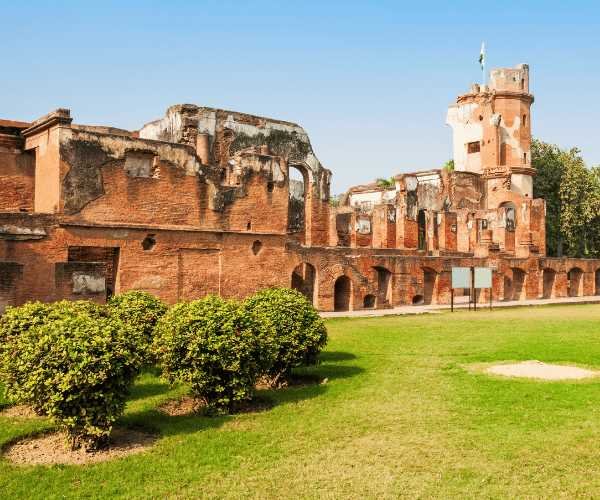
British Residency
The British Residency of Lucknow, which is also a Residential Complex served as the headquarters for the generals of the British East India Company. However, with the 1857 uprising, this once composed complex turned into a British refugee camp during that revolt.
The fort is now in ruins and a British cemetery nearby sites the graves of all the colonisers who died during the Lucknow siege. The ruins are now protected by the Archaeological Survey of India. The Residency also hosts a light and sound reminiscing the 1857 revolt show every evening.
Aminabad
One of the most bustling and oldest shopping hubs of Lucknow, Aminabad is a famous market selling a wide range of products from clothes and jewellery to cosmetics, footwear and even books.
There are an array of food stalls and restaurants serving locally-loved street food and other authentic savouries. Much like any other street market, Aminabad too requires handy bargaining skills. However, most stalls here are not very over-pricey.
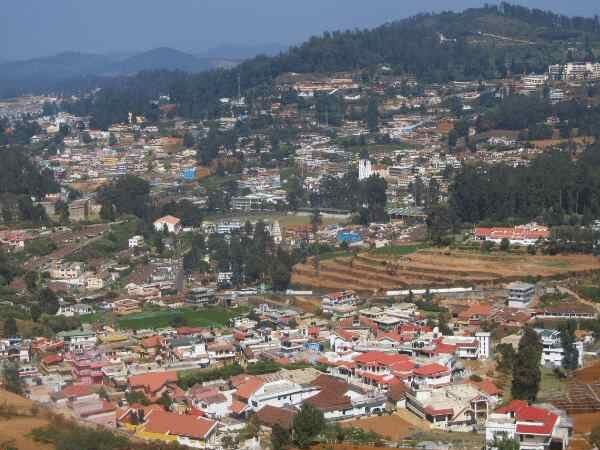
Varanasi
One of the most bustling and oldest shopping hubs of Lucknow, Aminabad is a famous market selling a wide range of
World’s oldest living city, Varanasi – also known as Kashi (City of Life) and Benaras, is the spiritual capital of India. It is one of Hinduism’s seven holy cities. The old city of Varanasi lies along the western banks of the Ganges, spread across a labyrinth of narrow galis. Be prepared to walk on foot and encounter some holy cows! Temples at almost every turn engulf Varanasi but the Kashi Vishwanath Temple is the most visited and the oldest of the lot. Benaras is known as the city of Lord Shiva for a reason, and rightfully so.
Varanasi is considered an auspicious place to die, as it is believed to grant moksha or liberation from the cycle of life and death. Spiritually enlightening, the heart of the city pulsates around the ghats, about 80 of which border the Ganges. Be prepared for the sights, sounds and smells! Don’t miss out on the hot chaat and cool lassi. Though, all chaos and noise on the ghats take a pause before dusk when the Ganga Aarti begins to take place, a ceremony of immense grandeur.
products from clothes and jewellery to cosmetics, footwear and even books.
There are an array of food stalls and restaurants serving locally-loved street food and other authentic savouries. Much like any other street market, Aminabad too requires handy bargaining skills. However, most stalls here are not very over-pricey.
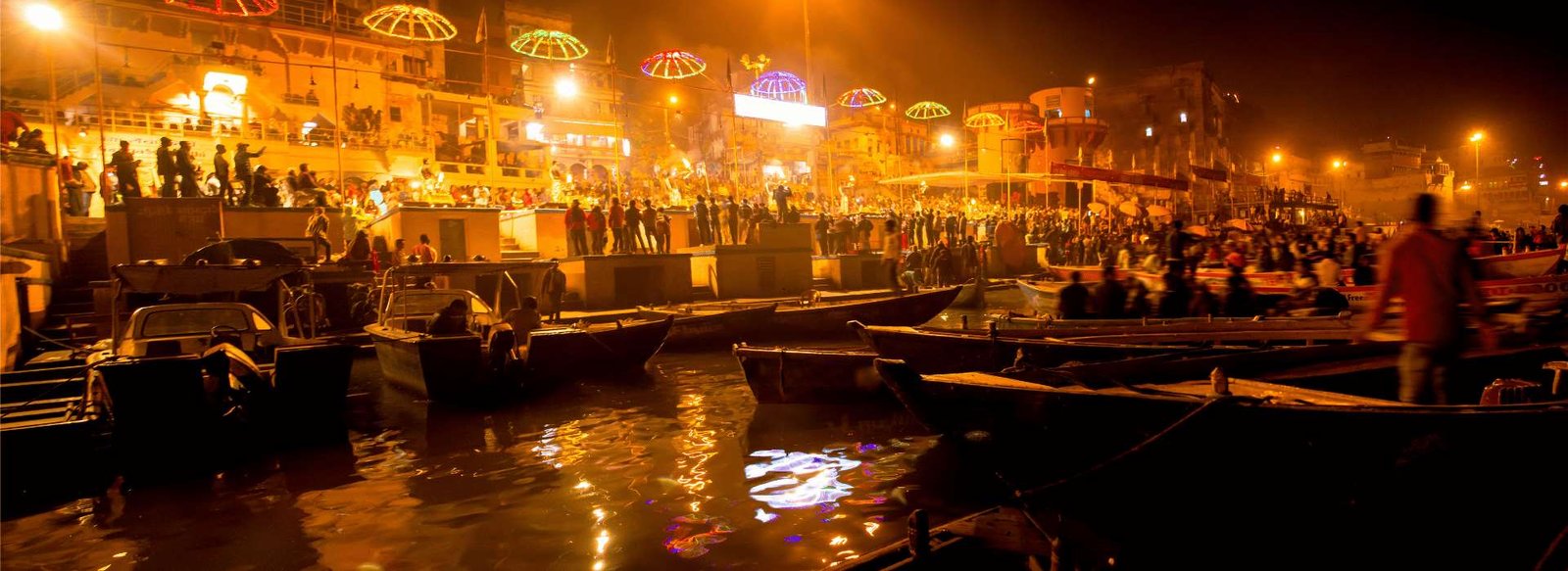
Kashi Vishwanath Temple
Situated on the western bank of holy river Ganga in Varanasi, Kashi Vishwanath Temple is one of the 12 Jyotirlingas or temples dedicated to Lord Shiva. The main deity of Kashi Vishwanath Temple is Lord Shiva, also known as Vishwanatha or Vishweshwarar meaning ‘the ruler of the universe’. The city of Varanasi, the cultural capital of India, is thus known as the city of Lord Shiva. The temple has 800 kg of gold plating on its tower.
Camera, mobile phones, electronic devices are not allowed inside and must be deposited in lockers outside. Foreigners can enter from Gate number 2 where they can walk past the Indians waiting for their turn. There is also a well present within the temple complex called Jnana Vapi or wisdom well where only Hindus are allowed to enter.
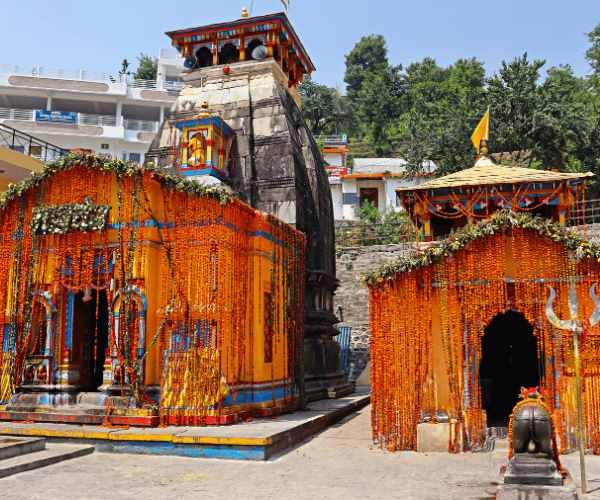
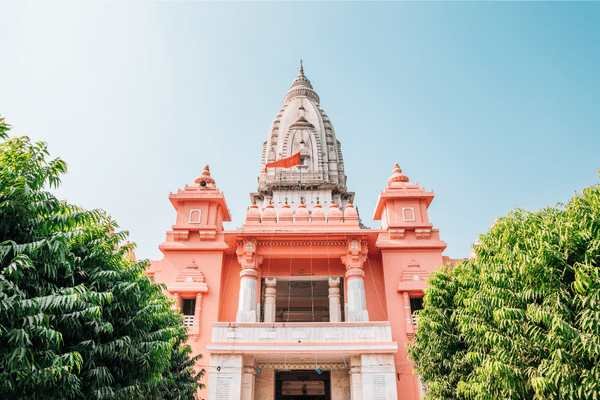
New Vishwanath Temple
The New Vishwanath Temple is every pious man’s go-to destination to feel overwhelmed by the presence and power of the great Lord Shiva. Not only is it located in the heart of the cultural capital of India – Varanasi, but its divinity is multiplied by the holy river Ganga that flows by its side. Banaras Hindu University is hence home to one of the biggest tourist attractions in the city of Varanasi, the grand New Vishwanath Temple. Visiting this temple gives the worshipper the space to put himself in the hands of God, at his disposition, and listen to the voice in his heart.
Bharat Hindu University
Established by Madan Mohan Malviya in 1916, Banaras Hindu University is a 5.3 square kilometre campus in the city. It has about 30,000 students residing in the campus and is the largest residential university in the continent. The University has a long list of notable alumni and faculty. The Indo-Gothic architecture and the sprawling lawns add to the beauty of the place.
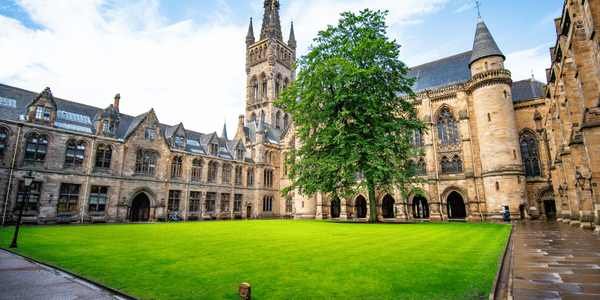
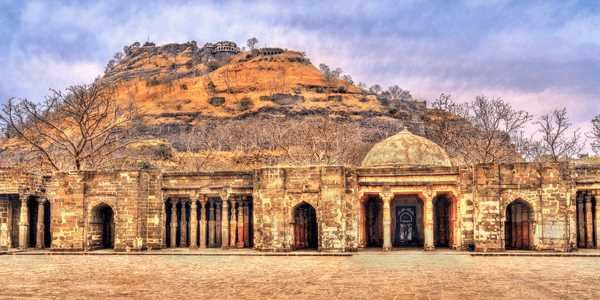
Bharat Mata Mandir
Bharat Mata Mandir is a unique shrine dedicated to our country, Mother India. The temple does not have any deity, but a relief map of the country carved in marble. The temple was the brainchild of Babu Shiv Prasad Gupta, a freedom fighter. It was built in 1936 and inaugurated by Mahatma Gandhi and has ever since been the only one dedicated to a country in the World.
Dashashwamedh Ghat
As the name suggests, it is believed that this is the place where Lord Brahma performed the Dasa Ashwamedha sacrifice. This ghat is a religious spot and many rituals are performed here.
Visit at the time of Kartik Purnima to witness a celestial manifestation in the city of lights – Dev Deepavali. This Ghat is most famous for the Ganga Aarti conducted every evening, and hundreds of people visit it every day. Watching the Ganga Aarti is an experience which cannot be explained in words. When in Varanasi, make sure not to miss this calming experience.

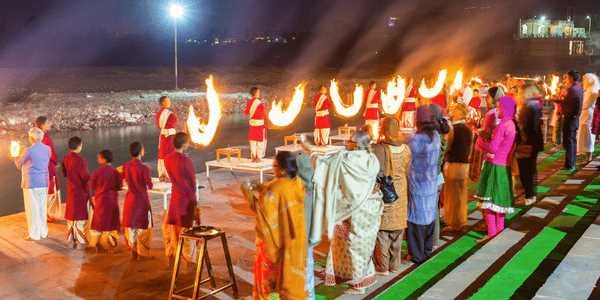
Ganga Aarti
Ganga Aarti is an important ritual held on a grand scale every morning and evening on the banks of the holy Ganges. The priests perform the Aarti at Dashashwamedh Ghat. The entire Ghat gets illuminated with a divine light that can be felt strongly. The magnificent ritual involves huge brass lamps lit with oil and the priests chant the holy mantras that reverberate in the entire location.
Sarnath
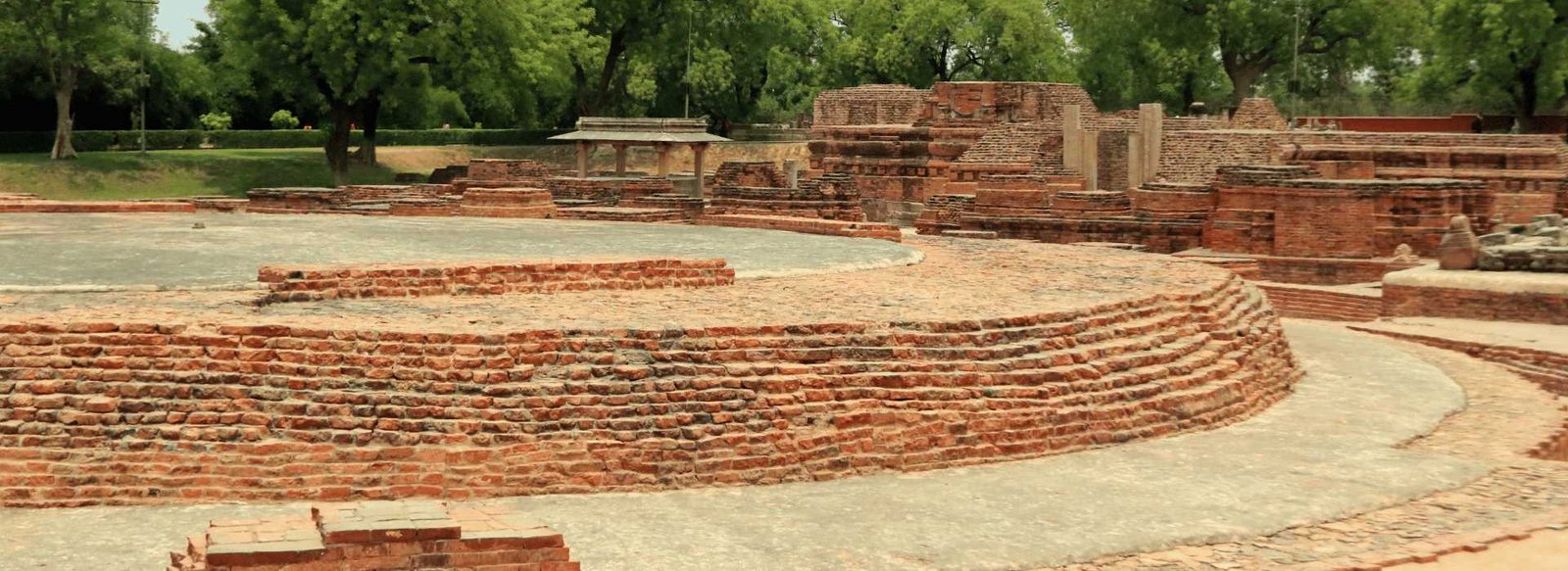
A quiet and spiritual town set amidst the otherwise densely populated state of Uttar Pradesh, Sarnath is a city of historical marvel with numerous Buddhist stupas, museums, excavated ancient sites and beautiful temples that prove to be a source of immense wonder and astonishment to tourists due to their mystical and serene setting. Being just 10 kms from Varanasi, Sarnath is often flocked with devotees is the perfect pilgrimage site for Buddhists, Jains and Hindus, alike.
A pilgrimage place for Buddhists, Sarnath features a number of temples and completely serene surroundings with its various historically significant, architectural marvels. Being the place where Lord Buddha preached his first sermon, Sarnath has since been a popular tourist attraction and is well known for its cultural significance as well as the mystical setting. To name a few attractions contributing to the spiritual significance of Sarnath, we have, Ashoka’s Pillar, Dharma Stupa built by Emperor Ashoka and many more.
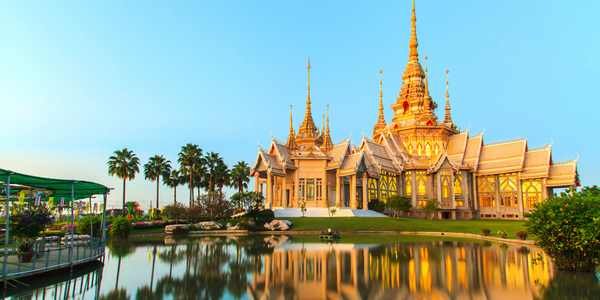
Thai Temple
A well known attraction in Sarnath, the Thai Temple displays the That style of architecture. The temple is set amongst beautiful gardens and is managed by Thai Buddhist Monks offering calm and peaceful surroundings.
Tibetan Temple
This Buddhist shrine has been decorated with Thangksa, which are Tibetan Buddhist paintings. The temple features a statue of Shakyamuni, the Buddha. The Prayer Wheels are seen outside the building which on being rotated clockwise, release paper scrolls with prayers written on them.
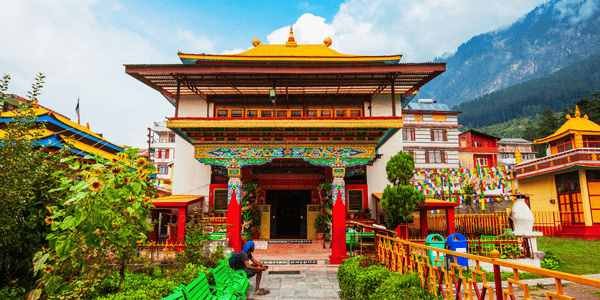
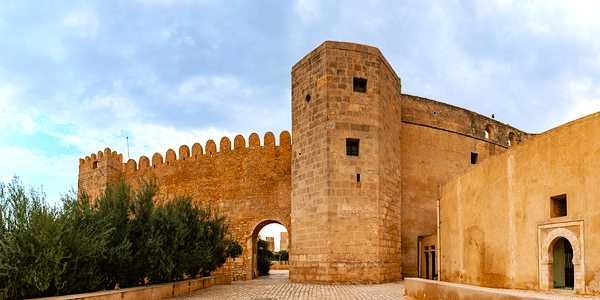
Archaeological Museum
Established in the year 1910, the Archaeological Museum displays a small collection of artefacts ranging from the 3rd century BC to 12th century AD.
Ashoka Pillar
The national emblem of India and a mark of Emperor Ashoka’s visit to Sarnath, the Ashoka Pillar crafted out of stone is an impressive structure with four lions at the top. This 50 m long pillar along with the Dhamek Stupa, are Ashoka’s gift to Buddhism and the entire complex has a calm aura to it. A number of monks are spotted meditating around the compound. The entire complex is filled with lush green lawns, and along with the Stupa, they resemble a colony with the Ashoka Pillar being the main attraction. India’s oldest archaeological museum has been built at the periphery of the complex.


